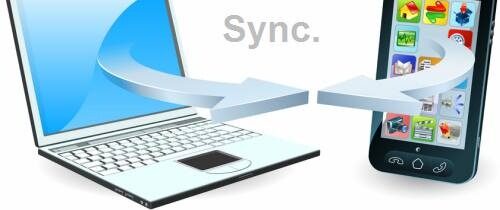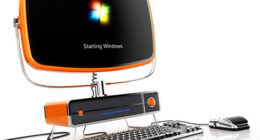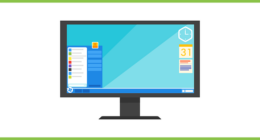Backup is the process of copying important data to a separate location as a safeguard against data loss, while Sync refers to the process of keeping multiple copies of a file in multiple locations up-to-date by automatically copying changes made to one copy to all other copies. Backup is a process of making copies of your data in case something happens to the originals. Sync, on the other hand, keeps your computers and devices up-to-date with the latest copy of your data. Backup is important because it gives you a way to restore your data if it is lost or corrupted. Sync is important because it ensures that you have the most recent version of your data on all of your devices. If you only ever want to access your data from one computer, then backup is probably all you need. However, if you have multiple devices and want to keep them all up-to-date, then sync is essential.
Backup
(Photo by Markus Spiske on Unsplash )

Backup refers to the process of copying and storing data in a separate location, usually in the cloud, in case the original data is lost or damaged. Backups can be done automatically or manually, and the data can be restored to the original location or a different location in case of data loss.
Backups serve as a safety net for important data, providing peace of mind and protection against data loss due to hardware failure, theft, accidental deletion, or other unexpected events.
Backup is making a copy of your data to keep in a safe place in case something happens to the original. This could be an external hard drive, the cloud, or even a USB flash drive.
Sync
(Photo By Siddartha Thota on Flickr)

Sync, on the other hand, refers to the process of keeping data in sync across multiple devices. This means that when you make changes to a file on one device, those changes will automatically be reflected on all other synced devices.
Sync is often used to ensure that important data is accessible from all devices, such as a computer, smartphone, and tablet. This allows users to access the latest version of their files from anywhere, at any time.
Sync is a process of keeping two or more computers, devices, files, or folders in the same state. The word “synchronize” comes from the Greek word “synkhrōnēs,” which means “together.”
Sync typically happens automatically and silently in the background without any input from the user. It can be triggered manually as well. For example, you might sync your device with a computer to transfer files between them. Or you might sync your email account with a new phone so that all your old messages appear on the new device.
How Backup and Sync are different
The main difference between backup and sync is their purpose. Backup is about protecting data in case of loss or damage, while sync is about ensuring that data is accessible from multiple devices.
Another key difference is the way data is stored. Backup data is stored in a separate location and can be restored in case of data loss, while synced data is stored on multiple devices and updated in real-time.
Why use both Backup and Sync
While backup and sync serve different purposes, they are often used together to provide comprehensive data protection and accessibility. By using backup and sync services, users can ensure that their important data is both protected and accessible from any device.
Using backup and sync together provides an extra layer of protection against data loss, as backup data can be used to restore data in case of sync failure or device loss.
When to use backup and when to use sync
The main difference between backup and sync is when you need to use each one. Backup is typically used when you want to create a copy of your data in case something happens to the original. Sync is typically used when you want to keep two sets of data in sync with each other, such as on your computer and a mobile device.
Backup can be done manually or automatically, and you can choose how often to do it. For example, you might backup your important files once a week. Sync is typically done automatically and in real-time, so that any changes made to one set of data are immediately reflected in the other set.
There are some situations where you might use both backup and sync. For example, if you have important files on your computer and you also want to be able to access them on your phone, you would first backup the files from your computer. Then, you would sync the backed up files to your phone so that they’re always up-to-date.
The advantages and disadvantages of backups
Advantages of Backups:
- Data protection: Backups protect against data loss due to hardware failures, accidental deletion, and other unforeseen events.
- Easy recovery: Backups make it easy to recover lost or damaged data, which can save time and reduce stress in emergency situations.
- Peace of mind: Regular backups give you peace of mind knowing that your valuable data is protected and can be recovered if needed.
- Compliance: Some industries have regulations that require regular backups to maintain compliance.
- Cost-effective: Backups are often less expensive than other disaster recovery solutions and can be easily scaled to meet changing needs.
Disadvantages of Backups:
- Time-consuming: Creating regular backups can be time-consuming, especially if you have a large amount of data to backup.
- Storage space: Backups can require a significant amount of storage space, which can be expensive and take up valuable disk space.
- Error-prone: Backups can be error-prone if not performed correctly, and the resulting backups may not be usable in the event of a disaster.
- Complexity: Setting up and managing backup systems can be complex and require specialized knowledge, which can be a challenge for some organizations.
- Human error: Backups can be impacted by human error, such as forgetting to run backups or storing backups in an insecure location.
The advantages and disadvantages of sync
Advantages of Syncing:
- Access to data from multiple devices: Syncing allows you to access your data from multiple devices, including smartphones, tablets, and computers, which can be especially useful for people who are always on the go.
- Increased collaboration: Syncing enables multiple people to access and collaborate on shared files and folders, which can improve teamwork and productivity.
- Automatic updates: Syncing ensures that your data is always up-to-date on all your devices, which can save time and effort compared to manual updates.
- Reduced data loss: Syncing helps to reduce data loss by keeping multiple copies of your data on different devices.
- Increased efficiency: By having the latest version of your data readily available on all your devices, you can be more productive and efficient in your work.
Disadvantages of Syncing:
- Security risks: Syncing data across multiple devices can increase the risk of sensitive data being compromised or lost.
- Conflicts: Syncing data can result in conflicts if multiple people make changes to the same file at the same time, which can result in data loss or corruption.
- Dependence on internet connectivity: Syncing requires an internet connection to work, which can be a problem in areas with poor connectivity or limited data plans.
- Storage space: Syncing can consume a large amount of storage space, especially if you have a lot of large files or multiple devices.
- Complexity: Syncing can be complex and require technical expertise to set up and manage, especially for larger organizations with multiple users and devices.
The different types of backups and syncs
Different types of backups:
- Full Backup: A full backup is a complete copy of all the data in a specific location, including all files and system settings. Full backups are typically used to create an initial backup or to create periodic backups that provide a complete snapshot of the data at a specific point in time.
- Incremental Backup: An incremental backup only backs up files that have changed since the last backup, making it faster and less storage-intensive than a full backup. Incremental backups are used to create periodic backups that capture changes over time.
- Differential Backup: A differential backup is similar to an incremental backup, but it backs up all the changes made since the last full backup, rather than just the changes made since the last incremental backup.
- Mirror Backup: A mirror backup is a type of backup that creates an exact replica of the data, including all the files and folders in their original state. Mirror backups are used to quickly restore the data in the event of a disaster.
- Image Backup: An image backup is a type of backup that creates a complete image of the hard drive, including the operating system, system settings, and all data. Image backups are used to restore the entire system, including the operating system and applications, in the event of a disaster.
Different types of syncing:
- Two-way syncing: Two-way syncing allows data to be synchronized between two devices in both directions, so changes made on one device will be reflected on the other device.
- One-way syncing: One-way syncing allows data to be synced from one device to another in one direction only, so changes made on the source device will be reflected on the target device but not vice versa.
- Real-time syncing: Real-time syncing updates data on multiple devices as soon as changes are made, without any delay.
- Scheduled syncing: Scheduled syncing allows you to specify the times and frequency at which data should be synchronized between devices.
- Selective syncing: Selective syncing allows you to choose which files or folders should be synced, and which should not, based on your specific needs.
Can I delete Backup and sync?
Yes, you can delete Backup and sync. To do so, open the Settings menu and select the Delete option. This will remove all of your backed up data from Google’s servers.
What is the best way to Backup my desktop computer?
There are two main ways to backup your desktop computer: using an external hard drive or using a cloud-based backup service. Both have their pros and cons, so it’s important to choose the method that’s right for you.
External hard drives are great because they’re relatively inexpensive and easy to use. You can just plug the hard drive into your computer and drag-and-drop the files you want to backup. The downside is that external hard drives can be lost or stolen, and if your computer crashes, you’ll need another way to access your backups (like a second computer).
Cloud-based backup services are becoming more popular because they’re convenient and typically offer more features than external hard drives. With a cloud-based service, your backups are stored off-site (so they’re safe if your house burns down) and you can usually access them from any device with an internet connection. The downside is that cloud-based services can be more expensive than external hard drives, and if you have a lot of data to backup, it can take a long time.
What are some of the best software’s for backing up data on a PC ?
There are a few different software programs that can be used to back up data on a personal computer. Some of the best ones include:
EaseUS Todo Backup Free: This software is free to download and use, and it offers a variety of features to help users protect their data. It can create backups of entire hard drives, specific folders, or individual files, and it can schedule backups to run automatically.
AOMEI Backupper Standard: This software is also free to download and use, and it offers many of the same features as EaseUS Todo Backup Free. It can create full, incremental, or differential backups, and it supports a wide range of storage devices.
Acronis True Image: This software is not free, but it offers a comprehensive set of features for backing up data. It can create full system images, including the operating system, applications, and user data, and it supports a wide range of storage devices.
What are some of the best software’s for syncing data on a PC ?
There are many great software options for syncing data on a PC. Some of the most popular and well-reviewed options include Dropbox, SugarSync, and Google Drive. All of these services offer great features and allow you to keep your data synchronized across multiple devices.
How to backup data on a PC?
Backing up data on a PC is a critical task that should be performed regularly. There are many ways to backup data, but the most common and effective method is to use a backup software program.
When choosing a backup software program, it is important to select one that is compatible with your operating system and offers a variety of options for backing up data. Some programs allow you to schedule backups, while others require you to manually initiate the backup process.
Once you have selected a backup software program, you will need to choose where you would like to store your backups. The most common option is to store backups on an external hard drive or on a cloud-based storage service.
Once you have configured your backup software and chosen a storage location, you will need to create a backup schedule. It is important to back up data regularly in order to protect against data loss due to hardware failure or other accidents.
How to sync data on a PC?
To sync data on a PC, you can follow these steps:
- Choose a syncing service: There are several syncing services available for PCs, including Microsoft OneDrive, Google Drive, Dropbox, and iCloud. Choose the service that best meets your needs and sign up for an account.
- Install the syncing software: Download and install the syncing software for your chosen service on your PC. This will create a special folder on your computer that will be used to store your synced files and folders.
- Connect to your account: Log in to your account and connect your PC to your syncing service.
- Select the files and folders you want to sync: Choose the files and folders you want to sync between your PC and your syncing service. You can usually do this by right-clicking on the file or folder and selecting the option to sync.
- Start syncing: Once you have selected the files and folders you want to sync, click the “Sync” button to start the syncing process. Your files and folders will be automatically synchronized between your PC and your syncing service.
- Monitor the syncing process: You can monitor the syncing process by checking the syncing software on your PC. You will see a notification when the syncing process is complete, and you can also check the syncing status of individual files and folders.
Note: The specific steps for syncing data on a PC may vary depending on the syncing service you use. Be sure to follow the instructions provided by your syncing service for the best results.








